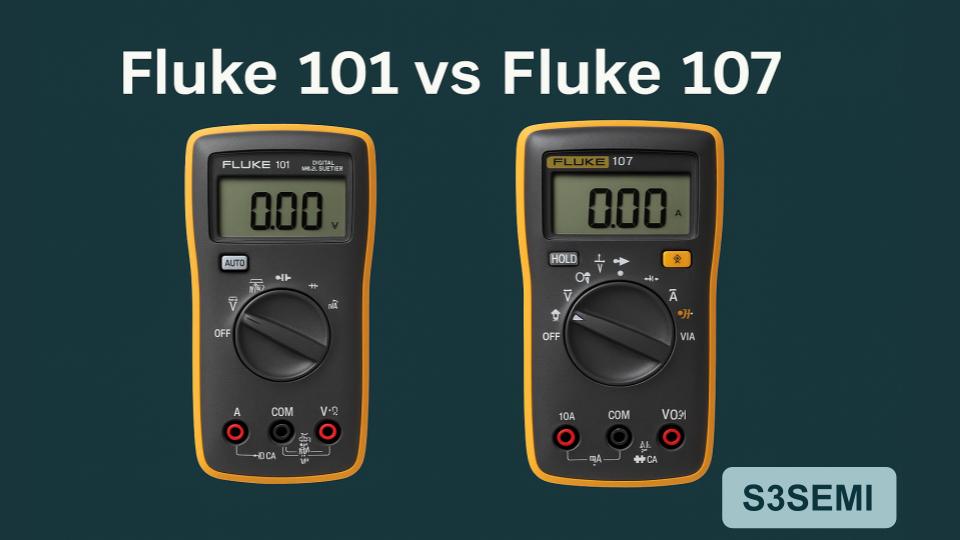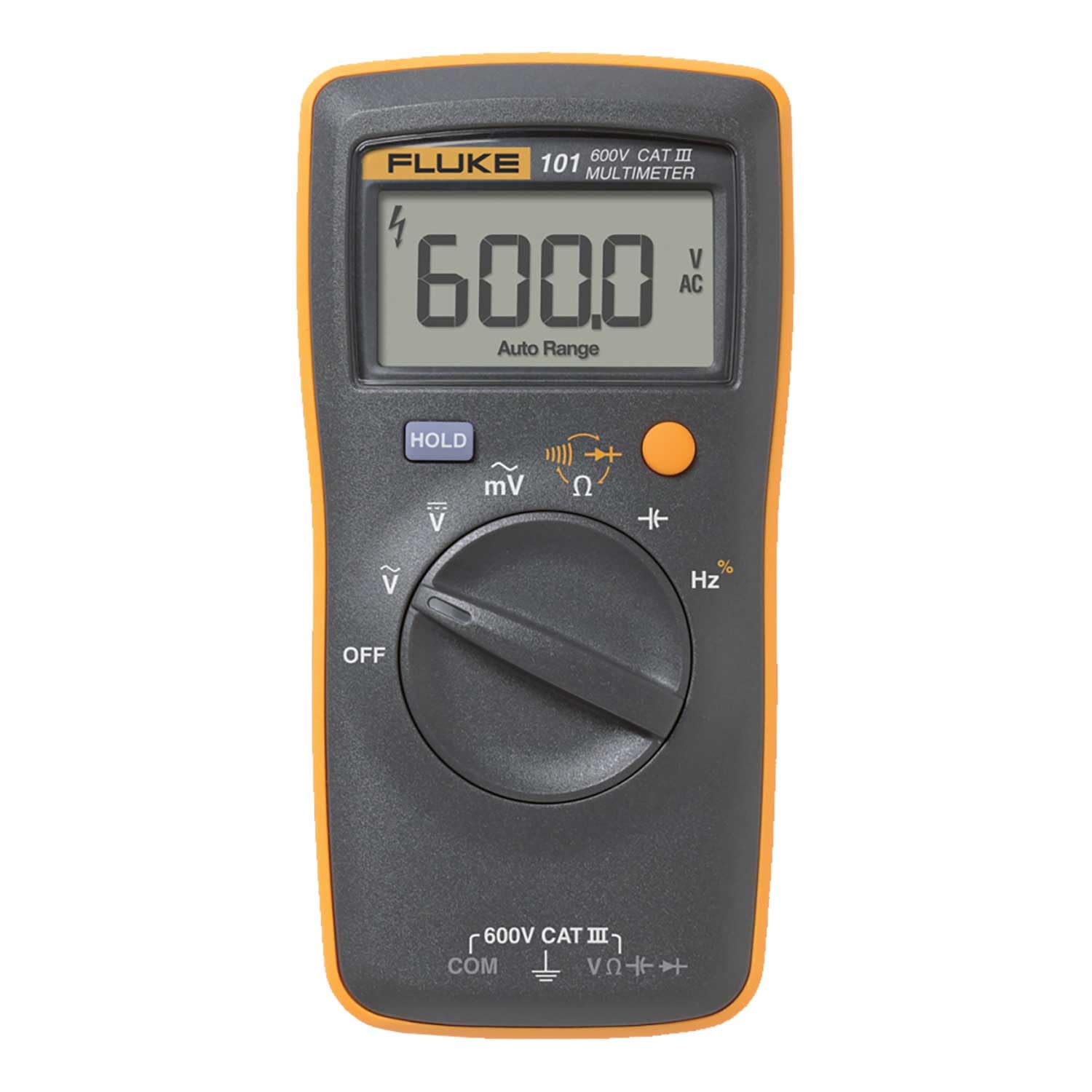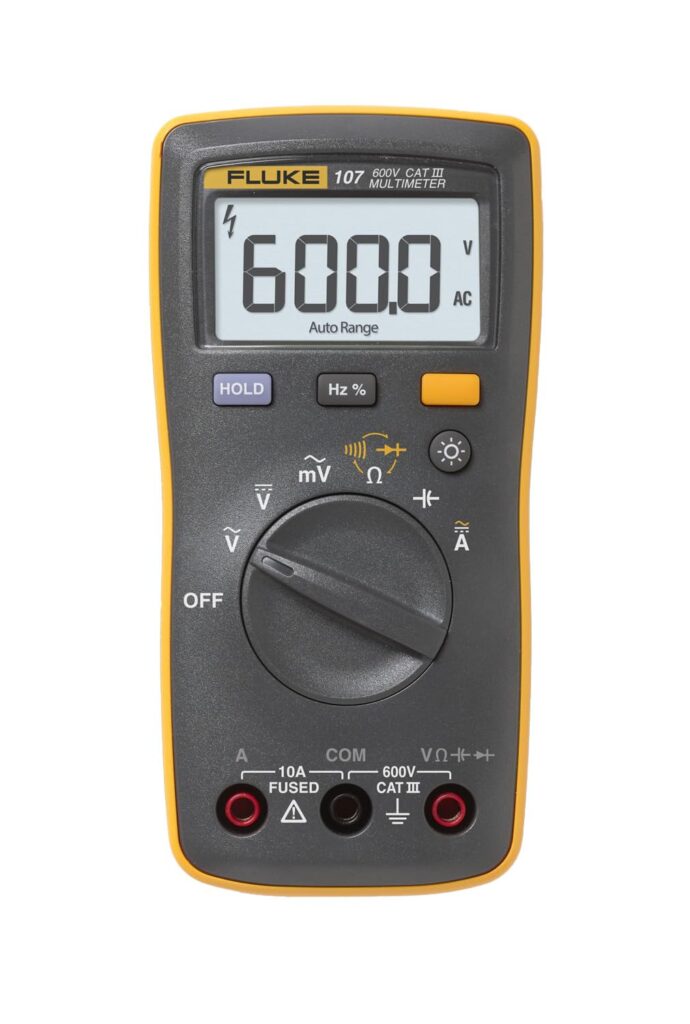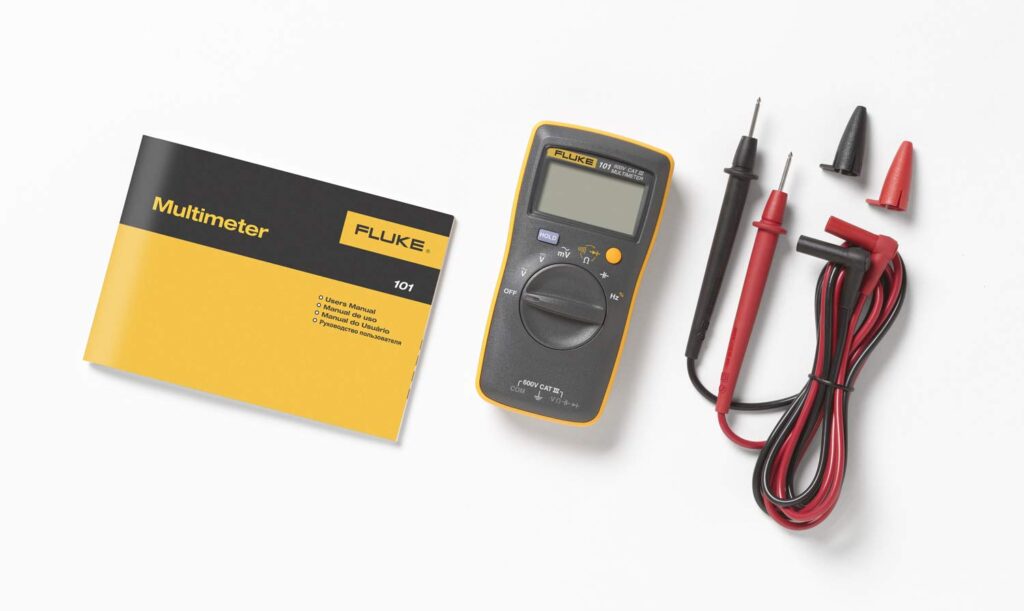The Fluke 101 and Fluke 107 are two of the most popular compact multimeters in Fluke’s lineup. Both are durable, accurate, and portable, but they’re designed for different types of users. Below is a clear, simple comparison to help you pick the right model.
🏷️ Fluke Multimeter on Amazon ⭐⭐⭐⭐
Comparison Table
| Feature | Fluke 101 | Fluke 107 |
|---|---|---|
| Measures AC/DC Voltage | Yes | Yes |
| Measures AC/DC Current | No | Yes, up to 10A |
| Backlit Display | No | Yes |
| Continuity & Diode Test | Yes | Yes, enhanced |
| Capacitance | Yes | Yes |
| Size | 130 × 65 × 27 mm | 142 × 69 × 28 mm |
| Weight | 160 g | 200 g |
| Safety Rating | CAT III 600V | CAT III 600V |
| Magnetic Strap | No | Yes |
| Typical Use | Basic troubleshooting, home use | Automotive, HVAC, field techs |
| 💳 Pricing | 💲Check Price | 💲Check Price |
Pros & Cons
Fluke 101
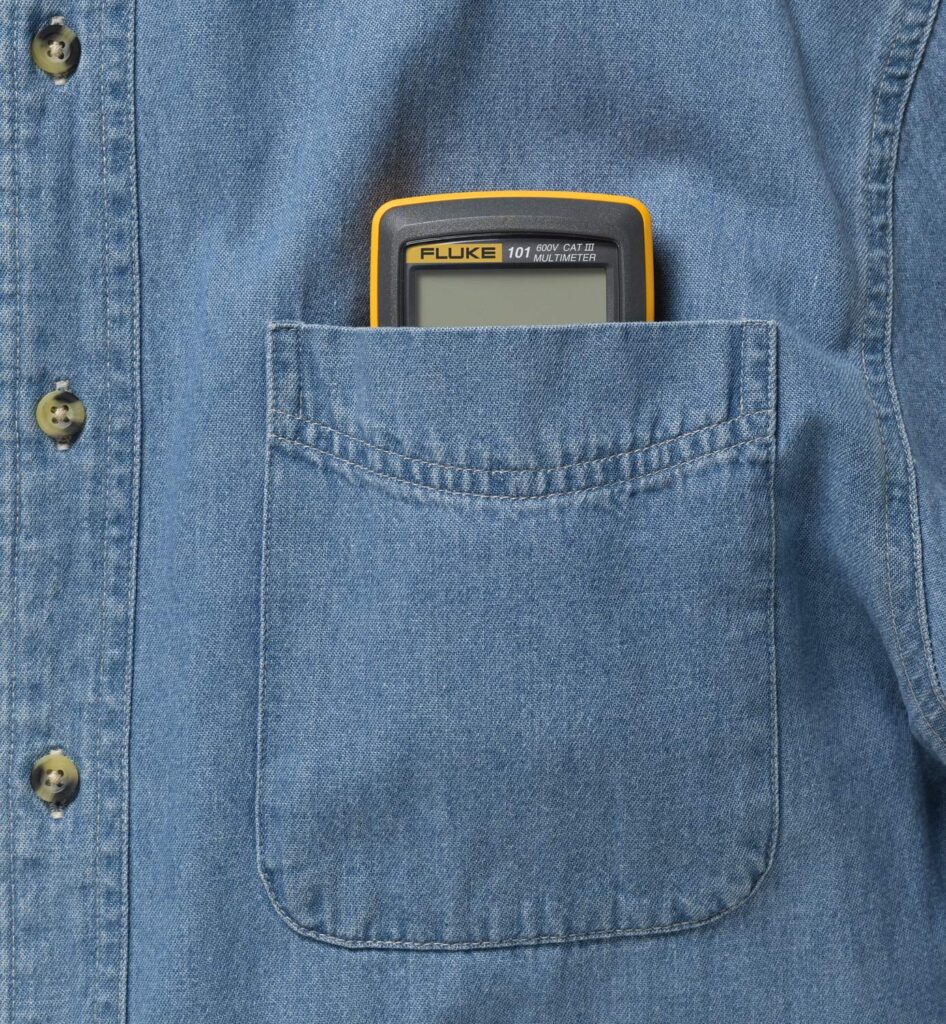
Pros
- Extremely compact and lightweight
- Reliable Fluke accuracy
- Excellent value
- Perfect for quick voltage/resistance checks
- Very long battery life
Cons
- Cannot measure current
- No backlight
- Limited functionality compared to the 107
Fluke 107
Pros
- Measures AC/DC current up to 10A
- Backlit display for low-light conditions
- Includes a magnetic strap for hands-free use
- More versatile for automotive, HVAC, and field work
- Still compact and easy to carry
Cons
- Slightly larger and heavier
- More expensive than the 101
- Not a full-feature professional meter like higher-end Fluke models
Which One Should You Choose?
Choose the Fluke 101 if you want the lowest-cost, simplest Fluke multimeter for basic household or light troubleshooting tasks. It’s small, reliable, and ideal for voltage, resistance, and continuity checks.
Choose the Fluke 107 if you need a more capable tool that can measure current, work in low-light environments, and handle more demanding tasks in automotive, HVAC, and general field service.
